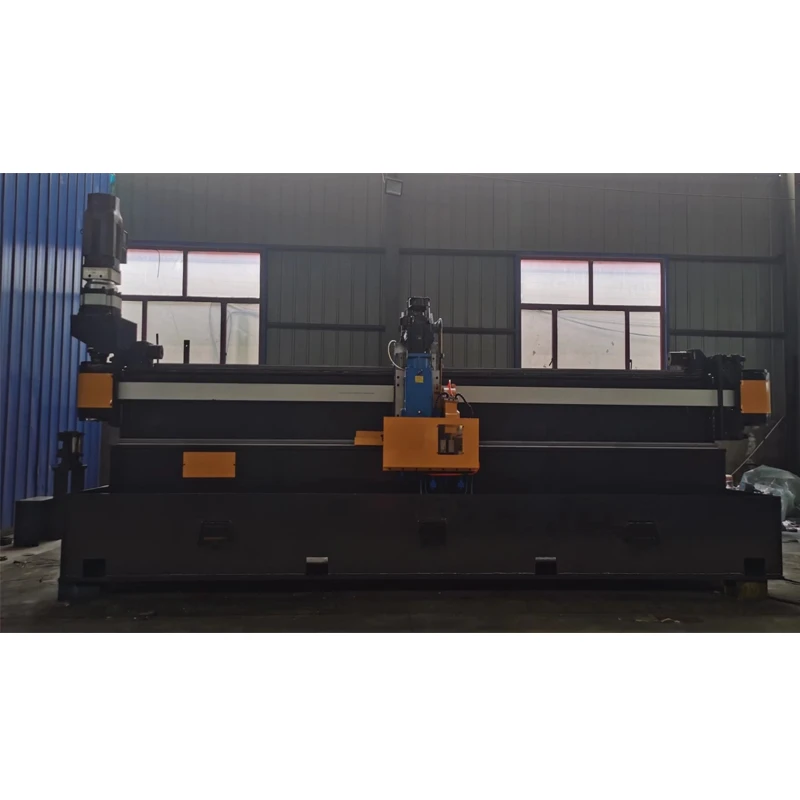Innovative Machinery for Shaping Steel Tubes Efficiently and Precisely
The Evolution and Significance of Steel Tube Forming Machines
In the contemporary manufacturing landscape, steel tube forming machines play a pivotal role in the production of steel tubes and pipes, which are integral to various industries, including construction, automotive, aerospace, and energy. This article explores the evolution, working principles, applications, and future prospects of steel tube forming machines.
Understanding Steel Tube Forming Machines
Steel tube forming machines are specialized equipment designed to shape flat steel strips or coils into tubes or pipes through a series of processes such as bending, welding, and finishing. The manufacturing process typically starts with the feeding of a flat strip of steel into the machine. From there, the machine employs techniques like roll-forming or extrusion, followed by welding the edges together to create a finished tube.
The evolution of these machines has been remarkable. Early methodologies were predominantly manual and labor-intensive, significantly limiting production speed and precision. However, technological advancements have ushered in an era of automation, resulting in more efficient and accurate processes. Modern steel tube forming machines are equipped with Computer Numerical Control (CNC) systems, allowing for precise control and flexibility in manufacturing various tube configurations.
Key Processes in Steel Tube Forming
2. Bending The cut strips are then fed through a series of rollers that bend the metal into the desired shape. This step is crucial as it dictates the curvature and consistency of the tube’s profile.
3. Welding Once the strip is rolled into a cylindrical shape, the edges need to be welded together. Depending on the application, different welding techniques, such as High-Frequency Induction (HFI) or Tungsten Inert Gas (TIG) welding, can be employed. The choice of welding technique impacts the strength and quality of the finished product.
4. Finishing After welding, the tubes undergo various finishing processes, including cutting to length, cleaning, and coating. These steps ensure that the tubes meet specific industry standards and customer requirements.
steel tube forming machine

Applications of Steel Tubes
Steel tubes are ubiquitous in modern society due to their strength, durability, and versatility. They are used in
- Construction Steel tubes form the skeleton of buildings and structures, providing essential support and stability. - Automotive Industry Tubes are integral components in frameworks, exhaust systems, and fuel lines, contributing to the overall functionality of vehicles. - Aerospace Lightweight steel tubes are employed in aircraft structures, enhancing performance without compromising safety. - Energy Sector Steel tubes are crucial in the transportation of oil and gas, as well as in renewable energy applications such as wind and solar energy infrastructures.
Future Prospects
The future of steel tube forming machines is poised for exciting advancements, driven by the ongoing demand for efficiency, sustainability, and innovation. One of the significant trends is the shift toward smart manufacturing. Integration with the Internet of Things (IoT) can facilitate real-time monitoring and predictive maintenance of machines, minimizing downtime and enhancing productivity.
Moreover, advancements in materials science are enabling the development of lighter, stronger steel alloys that improve the performance of steel tubes. This evolution will encourage machine manufacturers to adapt their forming processes to accommodate these materials.
Additionally, sustainability is becoming a critical focus in manufacturing. The steel industry is notorious for its carbon footprint, but with the introduction of eco-friendly practices and technologies, the process of forming steel tubes can become more environmentally conscious. Recycling steel scraps and investing in energy-efficient machines are steps manufacturers are taking towards a greener future.
Conclusion
Steel tube forming machines are essential to modern manufacturing, supporting a wide array of industries with high-quality, precise, and durable products. As technology continues to evolve, the capabilities of these machines will expand, meeting the increasingly complex demands of the global market. Emphasizing automation, smart technologies, and sustainability will not only enhance productivity but also ensure the steel industry remains resilient and competitive in the years to come. The journey of steel tube forming machines is ongoing, and its significance in our world is undeniable.
-
High Frequency Straight Seam Welded Pipe Production Line-BzZhou Xinghua Machinery Equipment Manufacturing Co., LTD.|Precision Welding, High EfficiencyNewsJul.30,2025
-
High Frequency Straight Seam Welded Pipe Production Line|BzZhou Xinghua|Precision Welding&EfficiencyNewsJul.30,2025
-
High Frequency Straight Seam Welded Pipe Production Line - BzZhou Xinghua|Precision Engineering&EfficiencyNewsJul.30,2025
-
High-Frequency Straight Seam Welded Pipe Production Line-BzZhou Xinghua Machinery Equipment Manufacturing Co., LTD.NewsJul.30,2025
-
High-Frequency Straight Seam Welded Pipe Production Line-BzZhou Xinghua Machinery Equipment Manufacturing Co., LTD.|Precision Manufacturing, High EfficiencyNewsJul.30,2025
-
High Frequency Straight Seam Welded Pipe Production Line-BzZhou Xinghua Machinery Equipment Manufacturing Co., LTD.|Precision Steel Pipe Manufacturing&Industrial EfficiencyNewsJul.29,2025


